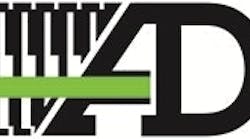N.Y. Mets Field Floats, Drains and Grows
NEW YORK – The New York Mets CitiField stadium has a state-of-the-art playing field that actually floats. An integral part of the field is the water drainage system that can also help nurture the grass for better root growth even early in the playing season. Because of the flexibility of the field, the drainage system needed to be designed so that it would move with the field. For this reason, high-density polyethylene (HDPE) pipe was selected due to its ability to flex and maintain joint integrity. Sections of the pipe are perforated to allow water from the field to enter and to be drained.
Built on reclaimed marsh land just south of LaGuardia Airport, the stadium is on piles embedded into the bedrock. The field, however, was designed to be independent of the stadium to accommodate any settling. Underneath is a network of HDPE pipe from Advanced Drainage Systems, Inc. (ADS) (NYSE: WMS) that enables the groundskeeper to create a vacuum to remove standing water or force cool or warm air into the root system of the natural grass.
The pipe pattern is set up like an underground tree. A 30-inch diameter pipe runs under the field from behind home plate to the warning track. This 430-foot run of ADS N-12® WT pipe has watertight bell and spigot connections between sections. Connected to this trunk line are six-inch diameter lateral branches, 42 lines on each side, 10 feet apart. The HDPE pipe is perforated on the top to allow water to infiltrate and provides a means for air exchange in the turf. The project used 560 feet of 30-inch, 11,600 feet of 6-inch diameter perforated pipe and 240 feet of 6-inch solid wall HDPE pipe from ADS. An ADS 4-ounce woven geotextile fabric lines the trenches.
Installation of the field, drainage system and turf were done by the LandTek Group (Amityville, NY). John Sulinski headed up the project.
“The goal was twofold,” he said. “First, was to effectively drain the field, and the second was to aid in the growth and integrity of the natural grass turf. The pipe system can blow warm air up through the root system of the grass. This three to four degree boost actually can help green the turf and is a key part of starting the grass to grow in the early spring in the northeast.”
Sulinski and his 15-man crew installed the 30-inch diameter trunk line first, a trench was dug to five feet deep and 22 sections of the ADS corrugated pipe were put together.
“For our crew there is nothing better than the ADS pipe,” he said. “It is rugged and can be easily handled because it’s made from HDPE.”
Additional information about ADS can be found at: www.adspipe.com
Editor's Note: Scranton Gillette Communications and the SGC Water Group are not liable for the accuracy, efficacy and validity of the claims made in this piece. The views expressed in this content do not reflect the position of the editorial teams of Water & Wastes Digest, Water Quality Products and Storm Water Solutions.







